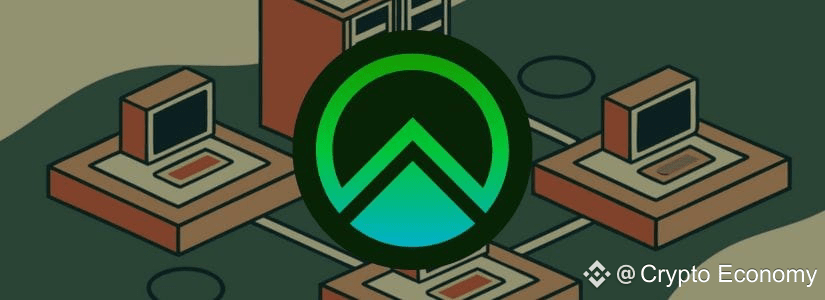Zircuit emerges as a novel Ethereum Layer 2 solution designed to tackle the network’s scalability challenges. It aims to deliver faster transactions and significantly lower fees while upholding robust security standards. A key innovation is its integration of artificial intelligence for proactive threat detection, prioritizing user safety. The ecosystem is powered by its native ZRC token.
What is Zircuit?

An Ethereum Layer 2 Scaling Solution
Zircuit is a cutting-edge Layer 2 blockchain built on top of the Ethereum network. Its core purpose is to address Ethereum’s scalability limitations, such as high transaction costs and slower speeds, without compromising security. By processing transactions off the main Ethereum chain and then securely batching proofs of these transactions back to Ethereum, Zircuit significantly enhances throughput and reduces costs for users. It is designed to be fully compatible with the Ethereum Virtual Machine, allowing seamless interaction with existing Ethereum wallets, tools, and dApps.
Integrating Zero-Knowledge Proofs & AI Security
A defining characteristic of Zircuit is its innovative use of ZK-proofs, a cryptographic method enabling transaction validation without revealing sensitive underlying data. This provides inherent privacy and efficiency benefits. Crucially, Zircuit uniquely augments its ZK-rollup architecture with sophisticated AI. This AI proactively monitors the network in real-time, analyzing transaction patterns and smart contract behavior to detect and prevent potential security threats, hacks, and malicious activities like MEV extraction before they can impact users.
Prioritizing User Safety and Experience
Zircuit places an unparalleled emphasis on user security as its foundational principle. It aims to create the safest environment possible for users to interact with DeFi, NFTs, and other Web3 applications. The integration of AI-driven security measures directly tackles prevalent risks in the crypto space, offering users enhanced protection against exploits and scams. This focus on safety, combined with the low fees and fast speeds inherent to its L2 design, strives to deliver a superior and more secure user experience compared to using Ethereum directly.
Building a Secure Ecosystem for DeFi and Web3
Beyond just technology, Zircuit is cultivating a vibrant ecosystem. It actively welcomes developers and users to build and interact within its secure environment. The platform supports seamless bridging of assets from Ethereum and other chains, facilitating the migration of established dApps and the creation of innovative new ones.
How Does Zircuit Work?

ZK-Rollup Foundation with AI Enhancement
At its core, Zircuit operates as a ZK-rollup. This means it processes large batches of transactions off the main Ethereum chain. Rather than sending each transaction detail to Ethereum, Zircuit creates a cryptographic proof that confirms the validity of all transactions in a batch. This proof is then posted back to Ethereum Layer 1 for final settlement. Crucially, Zircuit integrates advanced AI directly into its sequencer, enhancing this foundational rollup technology with proactive security monitoring.
Sequencer Processing & Proof Generation
Users initiate transactions by sending them to Zircuit’s sequencer node. The sequencer orders these transactions, executes them locally within Zircuit’s high-performance environment, and creates a new state root reflecting the updated state of the network after the batch.
Simultaneously, Zircuit’s specialized “prover” nodes generate the succinct zero-knowledge proof corresponding to this batch of transactions and the resulting state transition. This proof mathematically confirms the correctness of the execution without revealing private transaction data.
AI-Powered Security Screening
Before any transaction batch is finalized, Zircuit’s integrated AI engine performs real-time analysis. It scrutinizes transaction patterns, smart contract interactions, and potential attack vectors like malicious arbitrage, exploits, or MEV extraction attempts. This AI acts as a proactive filter, identifying and blocking suspicious activity before it is included in a batch and proven. This step adds a unique, preventative security layer on top of the inherent security provided by the ZK-proofs and Ethereum settlement.
Ethereum Settlement & Native Token Role
Once the ZK-proof is generated and verified by Zircuit’s infrastructure, it is submitted along with the new state root and minimal essential data to the Zircuit smart contract deployed on Ethereum Mainnet. Ethereum validators then verify the proof’s validity. Upon successful verification, the state update is finalized on Ethereum, inheriting its unparalleled security. The native ZRC token is integral to the ecosystem, primarily facilitating network governance, allowing holders to participate in key protocol decisions.
What is the ZRC Token?

The Native Utility and Governance Asset
ZRC is the native cryptocurrency token of the Zircuit ecosystem. It serves as the fundamental unit of value and coordination within its Layer 2 network. Beyond simple transactional use, the token is intrinsically linked to the platform’s operation and community governance. Holding ZRC grants users specific rights and functionalities essential for interacting with and shaping the Zircuit network’s future direction. It signifies both an investment in the ecosystem and a means for involvement.
Core Utilities Within the Ecosystem
The ZRC token powers several key functions. Primarily, it enables holders to participate actively in governance votes, influencing critical protocol upgrades, parameter adjustments, and treasury allocations. Furthermore, ZRC is expected to be used for paying transaction fees on the network, potentially offering discounts or priority features.
Staking ZRC tokens is anticipated to play a vital role in securing the network and may grant users access to premium features, enhanced rewards, or exclusive ecosystem benefits. It acts as the lifeblood for user engagement and system security.
Distribution and Incentive Mechanisms
Zircuit has implemented a points-based program to distribute ZRC tokens fairly upon its official launch. Users earn points by actively participating in the ecosystem during its building phase. Key activities include bridging assets into the Zircuit network, providing liquidity to designated protocols, interacting with supported dApps, and maintaining deposits over time.
These accumulated points are designed to directly translate into ZRC token allocations, rewarding early adopters and contributors who help bootstrap network activity and security.
Is the ZRC Token a Good Investment?
Evaluating ZRC as an investment involves significant inherent risk common to cryptocurrencies. Its value proposition hinges heavily on the successful adoption and growth of the Zircuit network. Factors to consider include the platform’s ability to attract users and developers, the proven effectiveness of its unique AI-enhanced security, the overall demand for its scaling solution, and the utility derived from holding ZRC.
Thorough research into Zircuit’s technology, roadmap, team, market competition, and tokenomics is essential before any investment consideration. Its potential is tied directly to Zircuit’s long-term success.
Conclusion
Zircuit is an innovative AI-enhanced Ethereum Layer 2 scaling solution using ZK-rollups to deliver faster, cheaper transactions while prioritizing security. Its unique integration of artificial intelligence proactively detects threats, aiming to create the safest environment for DeFi and Web3. The ecosystem, powered by the ZRC token, focuses on user safety and scalable growth.


